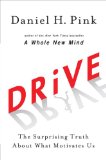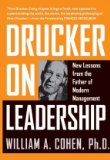I grew up in a time when church frequently included special gospel meetings that featured a guest preacher imploring nightly over the course of a week to get right and reap the rewards of heaven or certainly go to hell. We were encouraged to invite our friends and neighbors where every night the message and volume would escalate until a satisfactory number had responded to avoid the punishment of hell. Unfortunately, the fear motivated responses rarely resulted in life-long change, many left the church quickly never to return.
 As I read Daniel Pink’s book Drive: The Surprising Truth About What Motivates Us it struck me that we have built a church, family, and work culture based on an inferior motivational model. In a sense, our churches are stuck in a 20th century when such practices were the norm, but fall short with today’s generation. Because we were raised in this environment most of today’s leaders are just modeling what we know.
As I read Daniel Pink’s book Drive: The Surprising Truth About What Motivates Us it struck me that we have built a church, family, and work culture based on an inferior motivational model. In a sense, our churches are stuck in a 20th century when such practices were the norm, but fall short with today’s generation. Because we were raised in this environment most of today’s leaders are just modeling what we know.
Pink presents a compelling case for a deeper method of personal, peer, and subordinate motivation. He contends that human motivation has evolved from a basic needs model, to a “carrot and stick” model, and as he proposes, a more stable intrinsic motivation model. In modern vernacular he labels these models in the style of a progressive human operating system upgrade: Motivation 1.0, 2.0, and 3.0.

